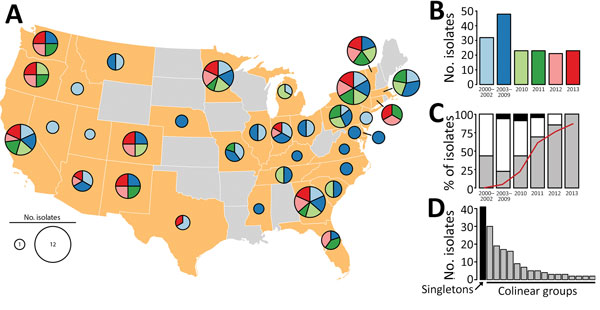Volume 25, Number 4—April 2019
Dispatch
Genomic Survey of Bordetella pertussis Diversity, United States, 2000–2013
Figure 1

Figure 1. Bordetella pertussis diversity, United States, 2000–2013. A) Geographic origin of B. pertussis isolates selected to maximize the number of source states from each of 6 time periods. Pie chart diameter represents the number of isolates, as detailed in the key, and colors indicate time periods, as shown in panel B. B) Isolate frequency by time period. C) Relative abundance of MLST types prn2-ptxP3-ptxA1-fimH1 (gray), prn2-ptxP3-ptxA1-fimH2 (white), and other (black). Red line indicates frequency of pertactin-deficient alleles. D) Abundance distribution of genome structures. Black bar indicates unique structures (singletons) and gray bars the 16 colinear groups. MLST, multilocus sequence typing.
1Additional members of the CDC Pertussis Working Group are listed at the end of this article.